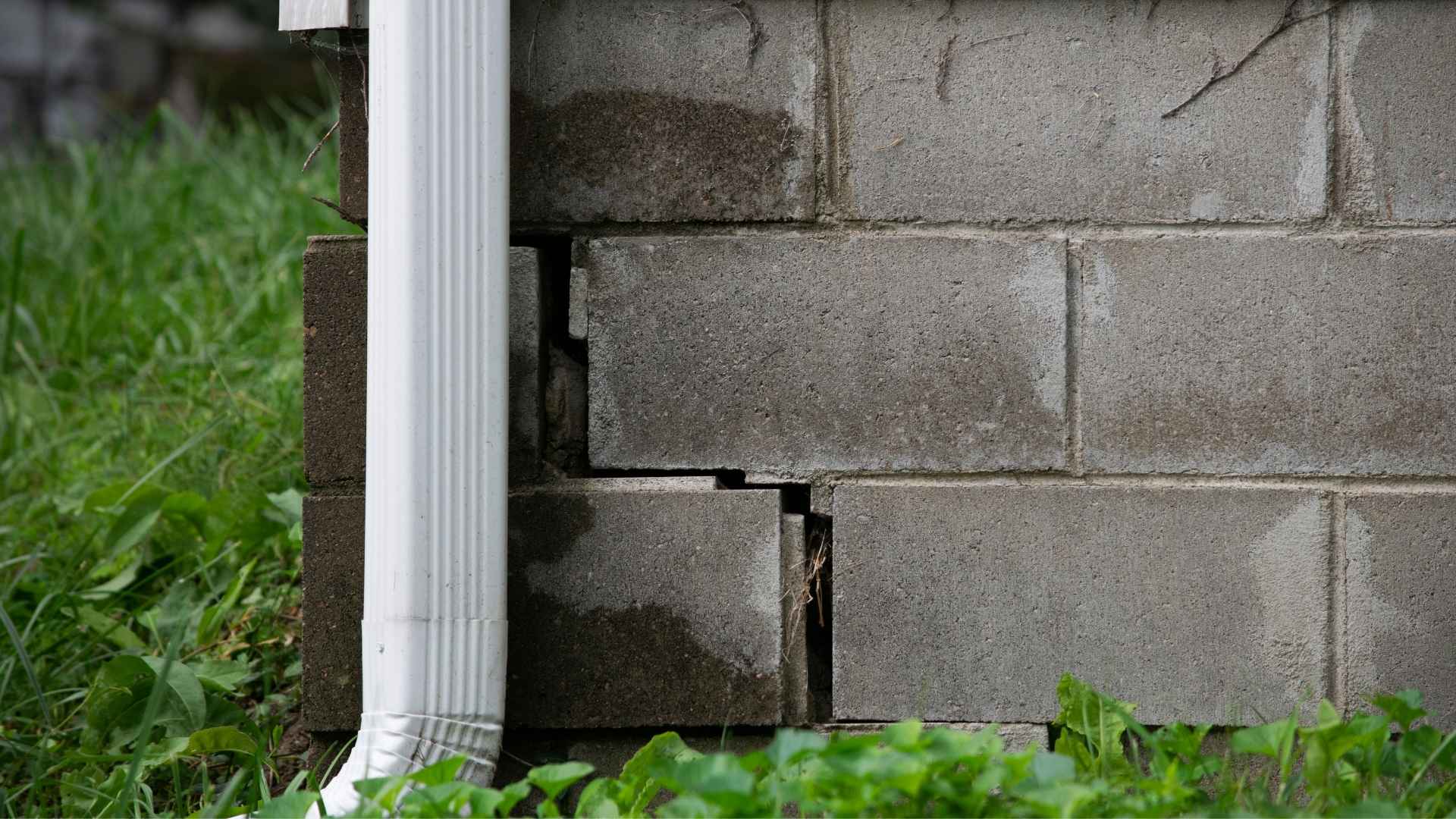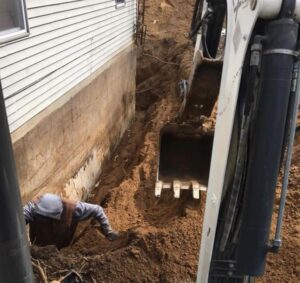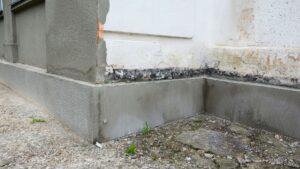The real danger lies not just in the crack itself—but in what it represents. Foundation cracks are often symptoms of larger structural issues, and ignoring foundation cracks can allow those issues to escalate unnoticed.
Here’s a breakdown of the hidden costs you may face:
1. Water Intrusion and Flooding
Small cracks provide an easy entry point for water—especially during Michigan’s rainy fall or spring thaw seasons. Once water starts seeping in, it can:
- Damage drywall and flooring
- Promote mold and mildew growth
- Cause your basement or crawlspace to flood
- Lead to foul, musty odors in the home
Fixing a leak or replacing damaged drywall is much more expensive than addressing a crack early on. And according to the Federal Emergency Management Agency (FEMA), mold can begin to grow within 24–48 hours of water exposure. Learn more about mold and moisture prevention from FEMA.
2. Pest Infestation
Foundation cracks create a pathway for insects, rodents, and other pests to invade your home. Termites, ants, spiders, and mice can slip through the smallest openings, especially if those cracks are damp or located near entry points.
Once pests are inside, they can be difficult and expensive to remove—especially if they’ve established nests in walls, insulation, or crawlspaces.
3. Decreased Energy Efficiency
Cracks in your foundation can impact your home’s energy efficiency. Gaps allow cold air to seep in during the fall and winter months, making your HVAC system work harder. This not only drives up your energy bills but also puts unnecessary strain on your heating system.
Additionally, moisture entering through cracks can affect insulation and further reduce thermal performance.
4. Compromised Structural Integrity
The foundation is literally what your home is built on. When it becomes compromised, everything above it is at risk. Left unchecked, foundation cracks can lead to:
- Sagging or uneven floors
- Doors and windows that won’t close properly
- Cracked walls and ceilings
- Bowing basement walls
- Complete structural failure in extreme cases
What might start as a few hundred dollars in preventative repair can spiral into tens of thousands in structural reinforcement or full foundation replacement.
5. Decreased Property Value
Homebuyers are wary of foundation issues. Even if the damage hasn’t progressed too far, the presence of visible cracks can scare away potential buyers—or give them major leverage to negotiate a lower sale price.
In a competitive housing market like Michigan’s, visible foundation cracks can be the difference between a quick sale and months of stagnation. Worse, homes with unresolved foundation issues may not pass inspection, complicating the closing process or disqualifying certain types of mortgages.
6. Increased Repair Costs Over Time
Foundation issues never get better on their own. In fact, they almost always get worse. What starts as a small crack today may require underpinning, wall anchors, or structural bracing tomorrow.
Waiting too long can drastically increase the scope—and cost—of repairs.
| Time of Repair | Typical Fix | Estimated Cost |
| Early detection | Crack sealing or epoxy injection | $500–$1,200 |
| Moderate damage | Piering or underpinning | $3,000–$10,000 |
| Severe damage | Full foundation replacement | $20,000–$100,000+ |
By ignoring foundation cracks, you’re gambling with your wallet.
What Foundation Cracks Should You Worry About?
Not all cracks are created equal. Some may be cosmetic, while others are urgent. Here’s a quick guide to help you differentiate:
Types of Cracks:
- Vertical Cracks: Often due to settling and less severe if small and not growing. Still, they should be monitored and sealed.
- Horizontal Cracks: More serious—especially in basement walls. These can signal soil pressure or water damage.
- Stair-Step Cracks in Brick or Block: Often signs of shifting or settling foundations.
- Widening Cracks: If a crack is getting larger over time, it’s a red flag.
- Cracks with Moisture: Water stains, mold, or musty smells near a crack are signs of a bigger problem.
If you’re not sure what you’re dealing with, it’s always worth having a professional assess the situation.
How Michigan’s Climate Makes It Worse
Michigan’s seasonal extremes—heavy rainfall in the fall, deep freezes in winter, and thaw cycles in spring—put added pressure on home foundations. Soil expands and contracts, groundwater freezes and melts, and snowmelt often floods low-lying areas.
All of these factors can accelerate the deterioration of your foundation if cracks are left unchecked.
What to Do if You Spot a Crack
- Document It: Take photos with timestamps to monitor any growth.
- Measure It: If it’s wider than 1/8 inch or growing, it’s time to act.
- Call a Professional: Don’t rely on guesswork—get an inspection from a licensed foundation repair expert.
- Address Drainage: Ensure downspouts and grading are directing water away from your foundation.
- Get It Sealed: For smaller cracks, professional crack injection can prevent water and pests from entering.
- Follow Up: Schedule regular inspections, especially if you live in an older home or one with a history of foundation issues.
Don’t Wait Until It’s Too Late
A small crack today could lead to thousands of dollars in repairs tomorrow. By ignoring foundation cracks, you’re not just risking your home’s structure—you’re risking its value, safety, and livability.
If you notice foundation cracks in your Michigan home, don’t brush them off. Take action now to avoid hidden costs later. A trained professional can determine whether the crack is harmless or a sign of deeper problems—and give you peace of mind as the seasons change.
Need Help Assessing a Foundation Crack?
Our team specializes in foundation repair throughout Michigan. We know how local soil conditions and weather affect homes like yours, and we offer affordable, effective solutions for every kind of foundation issue.
Contact us today to schedule a free inspection before the next rainfall or temperature drop exposes hidden damage.





